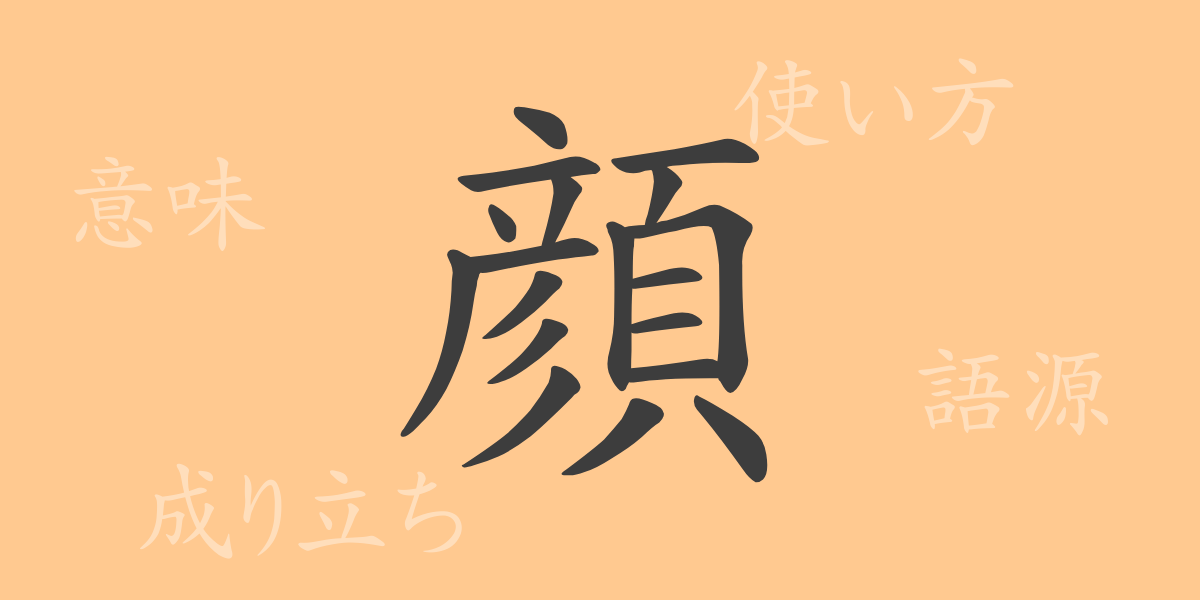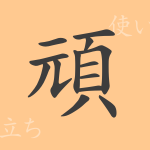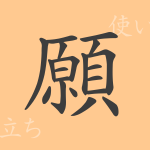It is said that people judge impressions in an instant, and at the heart of this is the “face.” In this article, we spotlight the kanji “顔” (Kao), one of the commonly used kanji in Japan, delving into its etymology, modern usage, and even idioms and proverbs, to explore its allure. Let’s journey together into the world of this kanji deeply rooted in Japanese culture.
Origins of the Kanji “顔” (Etymology)
The origins of the kanji “顔” trace back to ancient China. The original character was “彦” (hiko), which represented the outline of a face and its features. Over time, “彦” evolved, combining “頁” (けし [keshi], meaning head) and “彡” ( sanzui) to form “顔.” This literally means “the shape of the head,” coming to refer to the appearance of a face.
Meaning and Usage of “顔”
The kanji “顔” is used to refer to a person’s facial features or expression. Metaphorically, it can also indicate reputation or honor, as seen in expressions like “顔が広い”(Kao-ga-hiro-i) (having a wide network) or “顔を立てる”(Kao-wo-ta-teru) (saving face). Furthermore, it can refer to the surface or appearance of things, integrating “顔” into the Japanese language with a wide array of meanings.
Readings, Number of Strokes, and Radical of “顔”
The basic information about the kanji “顔” is as follows:
- Readings: The onyomi (Sino-Japanese reading) is “Gan”, and the kunyomi (native Japanese reading) is “Kao” .
- Number of Strokes: There are 18 strokes in total.
- Radical: The radical is “頁” (oogai).
Idioms, Phrases, and Proverbs Using “顔” and Their Meanings
There are a wealth of idioms, phrases, and proverbs that include “顔.” Here are some examples:
- “顔が広い” (kao- ga- hiro-i) – To be acquainted with many people.
- “顔を立てる” (kao- wo- ta-teru) – To consider and maintain someone’s honor or reputation.
- “顔をつぶす” (kao -wo tsubusu) – To tarnish one’s honor or prestige.
- “顔から火が出る” (kao- kara- hi -ga -de-ru) – To become red-faced from embarrassment.
- “青い顔をする” (ao-i -kao- wo suru) – To look terrified or to suffer from illness.
These expressions vividly portray human emotions and relationships through the facial expressions and conditions they describe.
Conclusion About “顔”
The kanji “顔” encompasses key elements that symbolize human emotions and communication. From ancient times to the present, its usage has expanded, demonstrating the richness of expression in the Japanese language. Just as a single facial expression can move a person’s heart, “顔” continues to exert a profound influence in the world of words.

























